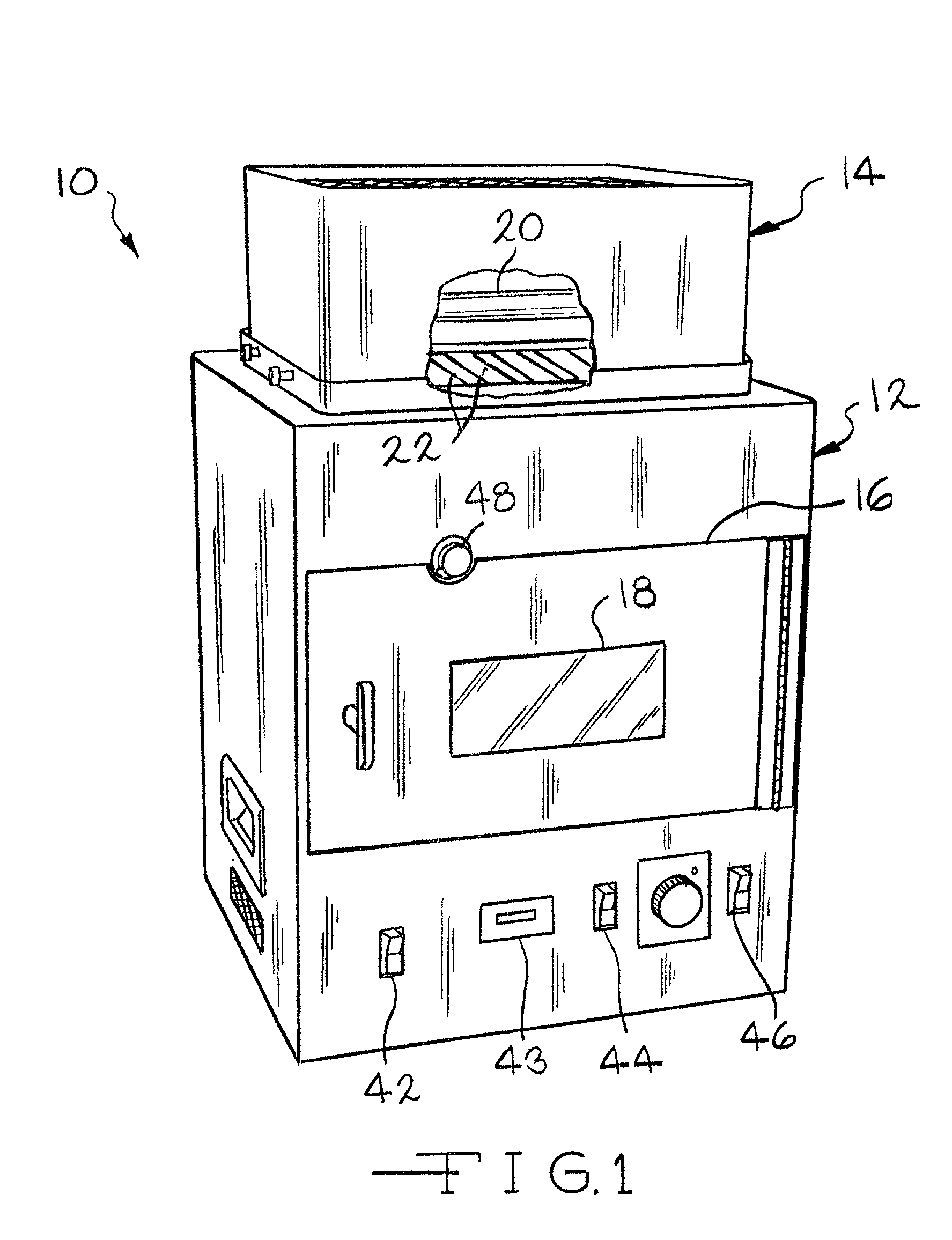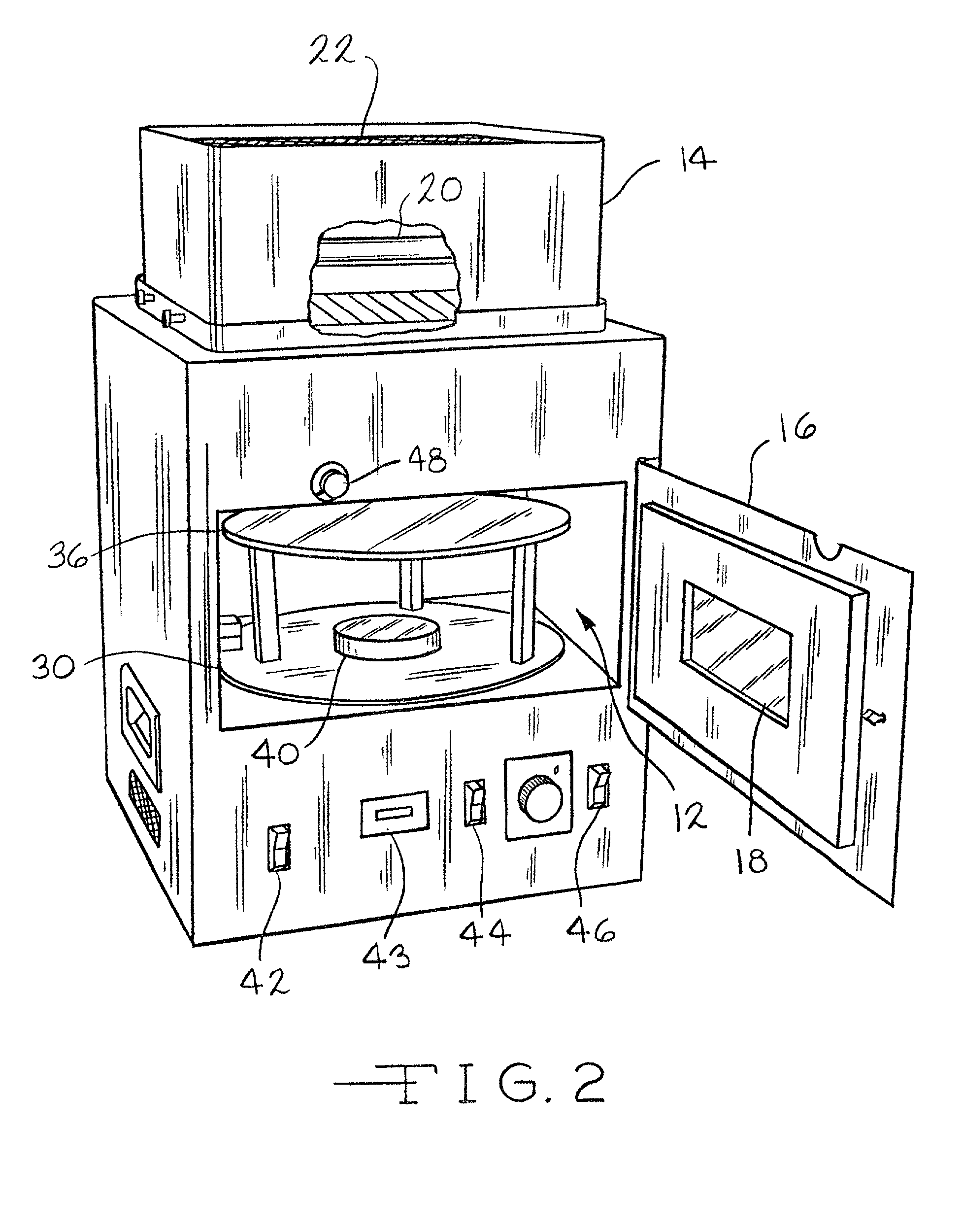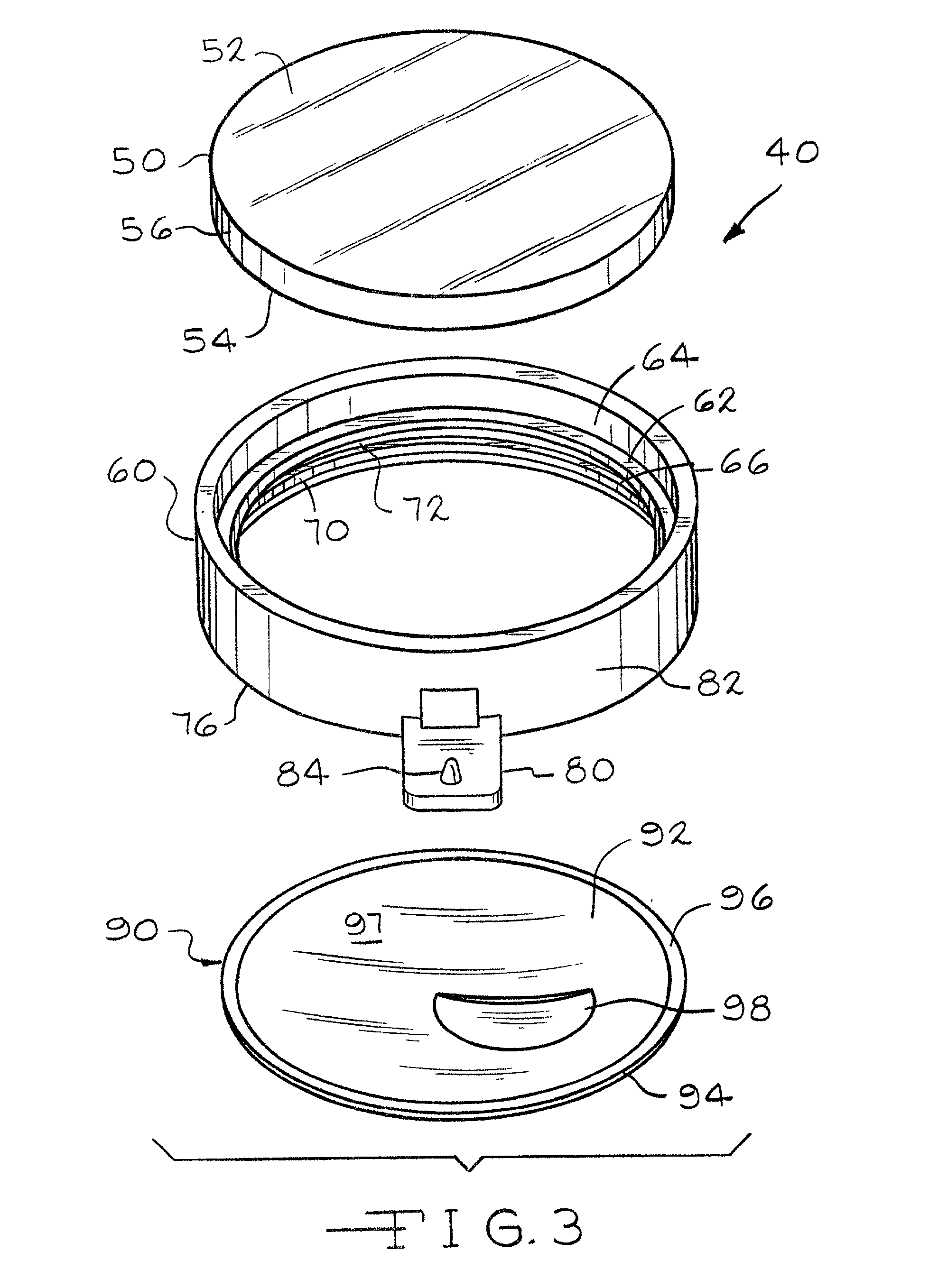Method and compositions for manufacturing plastic optical lens
a technology of optical lenses and molding methods, applied in the direction of instruments, transportation and packaging, other domestic objects, etc., can solve the problems of lens damage, undesirable shrinkage of cr39 polymer, and sometimes approximately 14% of the ophthalmic lens
- Summary
- Abstract
- Description
- Claims
- Application Information
AI Technical Summary
Benefits of technology
Problems solved by technology
Method used
Image
Examples
example 1
[0061]The lens composition for forming photochromatic blue lens comprises: bisphenol A ethoxylate (1 to 4) dimthacrylate about 70 to 90%, by weight; benzylmethacrylate, about 10 to about 20%, by weight; and one or more of the following stabilizing monomers: trimethlolpropane trimethacrylate, about 1 to about 20%, by weight; isobornyl methacrylate, about 1 to about 20%, by weight; ethoxylate nonylphenol, about 1 to about 20%, by weight; 2-phenoxyethyl methacrylate-esters, about 1 to about 20%, by weight; ethoxylate nonyl phenol acrylate, about 1 to about 20%, by weight.
[0062]The composition also includes one or more photochromatic dyes, about 0.001 to about 0.0001%, by weight. The composition may including additional non-photochromatic dyes in order to make bi-color lenses. Preferably the composition includes at least one photochromatic dye, about 0.01 to about 0.0001%, by weight; at least one UV stabilizer such as Tinuvin®, about 1 to about 0.1%, by weight.
[0063]The composition also...
example 2
[0065]One preferred photochromatic blue lens composition comprises:
[0066]bisphenol A ethoxylate (1 to 4) dimethacrylate, about 85.7%, by weight;
[0067]benzylmethacrylate, about 8.58%, by weight;
[0068]trimethlolpropane trimethacrylate, about 2.6%, by weight;
[0069]Tinuvin® UV stabilizer, about 0.19%, by weight;
[0070]Chromtech Blue 475, about 0.004%, by weight;
[0071]Chromtech PH 20, about 0.0096%, by weight;
[0072]Chromtech PH 8, about 0.00096%, by weight;
[0073]Silane, about 2.9%, by weight; and
[0074]Irgacure® 1700 photoinitiator, about 0.18%, by weight.
[0075]The composition is cured by exposure to visible light using a high pressure mercury lamp for a predetermined period of time.
example 3
[0076]One preferred example of a photochromatic orange lens composition comprises:
[0077]bisphenol A ethoxylate (1 to 4) dimethacrylate, about 85.7%, by weight;
[0078]benzylmethacrylate, about 8.58%, by weight;
[0079]trimethylolpropane trimethacrylate, about 2.6%, by weight;
[0080]Tinuvin® UV stabilizer, about 0.19%, by weight;
[0081]Chromtech Orange PH-2458, about 0.004%, by weight;
[0082]Chromtech PH 20, about 0.0096%, by weight;
[0083]Chromtech PH 8, about 0.00096%, by weight;
[0084]silane, about 2.9%, by weight;
[0085]Irgacure® 1700 photoinitiator, about 0.18%, by weight.
[0086]The composition is cured by exposure to visible light using a high pressure mercury lamp for a predetermined period of time.
PUM
| Property | Measurement | Unit |
|---|---|---|
| wavelength range | aaaaa | aaaaa |
| shrinkage | aaaaa | aaaaa |
| time | aaaaa | aaaaa |
Abstract
Description
Claims
Application Information
 Login to view more
Login to view more - R&D Engineer
- R&D Manager
- IP Professional
- Industry Leading Data Capabilities
- Powerful AI technology
- Patent DNA Extraction
Browse by: Latest US Patents, China's latest patents, Technical Efficacy Thesaurus, Application Domain, Technology Topic.
© 2024 PatSnap. All rights reserved.Legal|Privacy policy|Modern Slavery Act Transparency Statement|Sitemap



